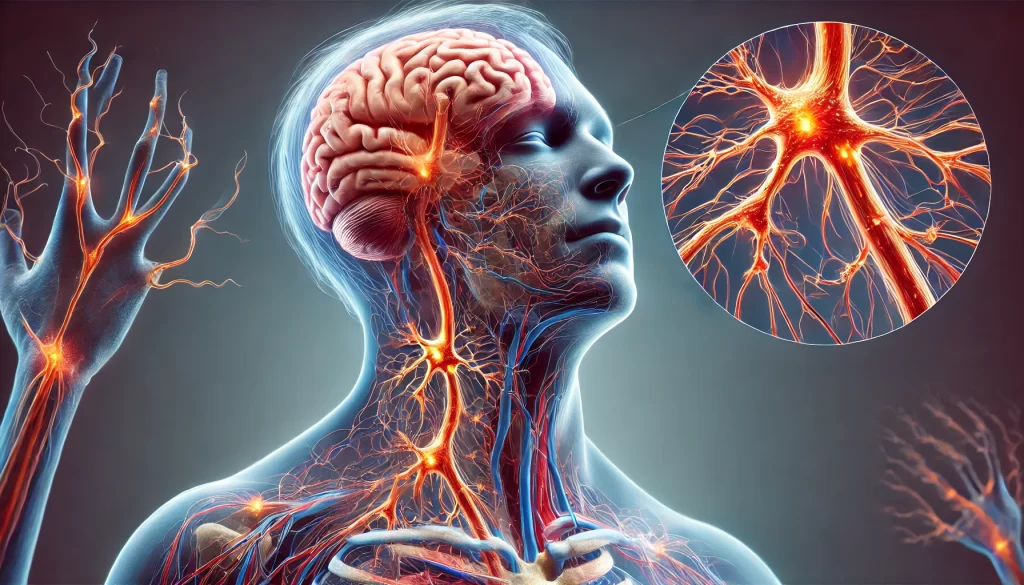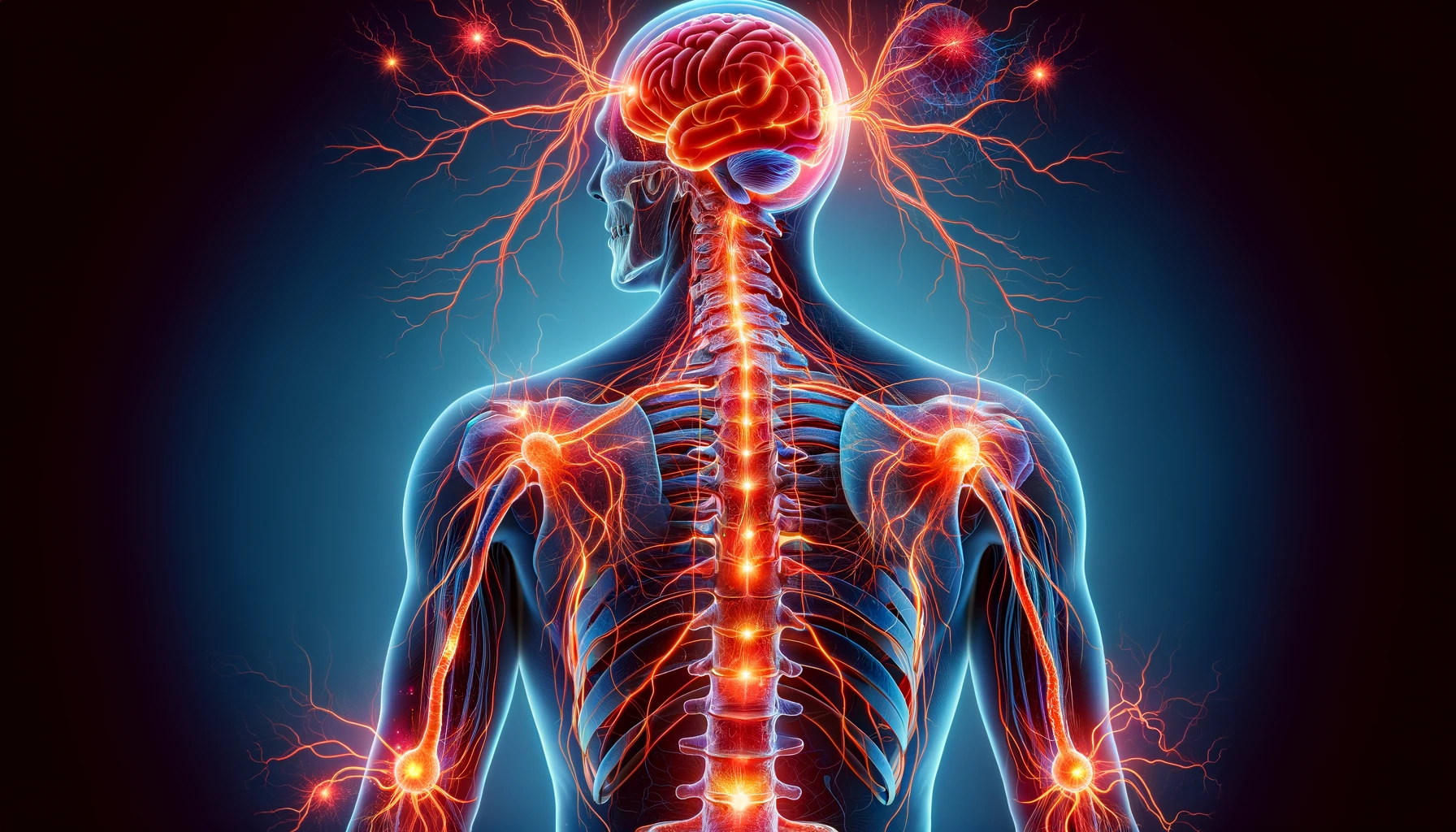What is multiple sclerosis?
Multiple sclerosis (MS) is a chronic disease that affects the central nervous system. It occurs when the body’s immune system fails to distinguish healthy tissue from harmful particles and mistakenly attacks the fatty, protective covering of nerve fibers, known as the myelin sheath. This disruption interferes with the transmission of signals between the brain and the rest of the body because the nerve fibers can no longer effectively conduct electrical impulses. As a result, a range of physical, neurological, and cognitive symptoms may develop.
We can distinguish four types of multiple sclerosis based on how the symptoms appear and progress:
- The most common form of multiple sclerosis is known as relapsing-remitting MS (RRMS). It is characterized by episodic symptoms followed by periods of partial or complete remission.
- Primary-progressive multiple sclerosis (PPMS) shows a steady progression (or worsening) of symptoms.
- Secondary-progressive multiple sclerosis (SPMS) initially begins as a relapsing-remitting MS but later transitions into a more progressive form.
- Progressive-relapsing multiple sclerosis (PRMS) is a rare form of multiple sclerosis in which there is a progressive decline of bodily function accompanied by episodes of intensified symptoms. The steady progression of symptoms is caused by nerve damage, while the relapses are caused by inflammation resulting from this damage.
Symptoms of multiple sclerosis
Multiple sclerosis is a condition that affects people in different ways and intensities. Some people may present mild symptoms while others may find themselves disabled.
Common symptoms include weakness, numbness, tremors, loss or impaired vision, loss of balance, bladder or bowel incontinence. Patients may also experience trouble in coordination, muscle weakness or stiffness, pain, and speech problems.
How is it traditionally treated?
There is no known cure for multiple sclerosis and its exact cause is unknown. For this reason, treatments aim to manage the symptoms and improve the quality of life. This may involve anti-inflammatory medication to slow the progression of the disease and reduce the frequency of relapses and symptomatic treatment through pharmacological intervention or physical therapy.
The downside of these treatments is that medications must be taken indefinitely, and they can bring unwanted side effects. In addition, these treatments do not prevent flare-ups or halt the progression of the disease.
How can stem cells help treat multiple sclerosis?
The use of stem cell therapy to treat multiple sclerosis is groundbreaking and has shown very positive outcomes.
Mesenchymal stem cells have the ability to regulate the immune system by regulating the immune reaction that mistakenly attacks the nervous tissue. In doing so, they reduce the inflammation caused by these attacks. Immune regulation also promotes the activation of self-healing processes and the proliferation of resident neural stem cells, which are responsible for restoring any damage in the brain-nerve communication. Additionally, mesenchymal stem cells can differentiate into cells that conform the myelin sheath, replace damaged parts and restore normal neural function. In brief, stem cell therapy has the potential to repair the nervous system by encouraging the growth and survival of new, healthy resident cells.
Stem cell therapy treats the disease by its cause and does so without additional medication. In fact, many patients are able to lower their medication dosage or even stop it altogether.
Our ethically sourced stem cells are screened to obtain the highest purity, potency, and safety.






